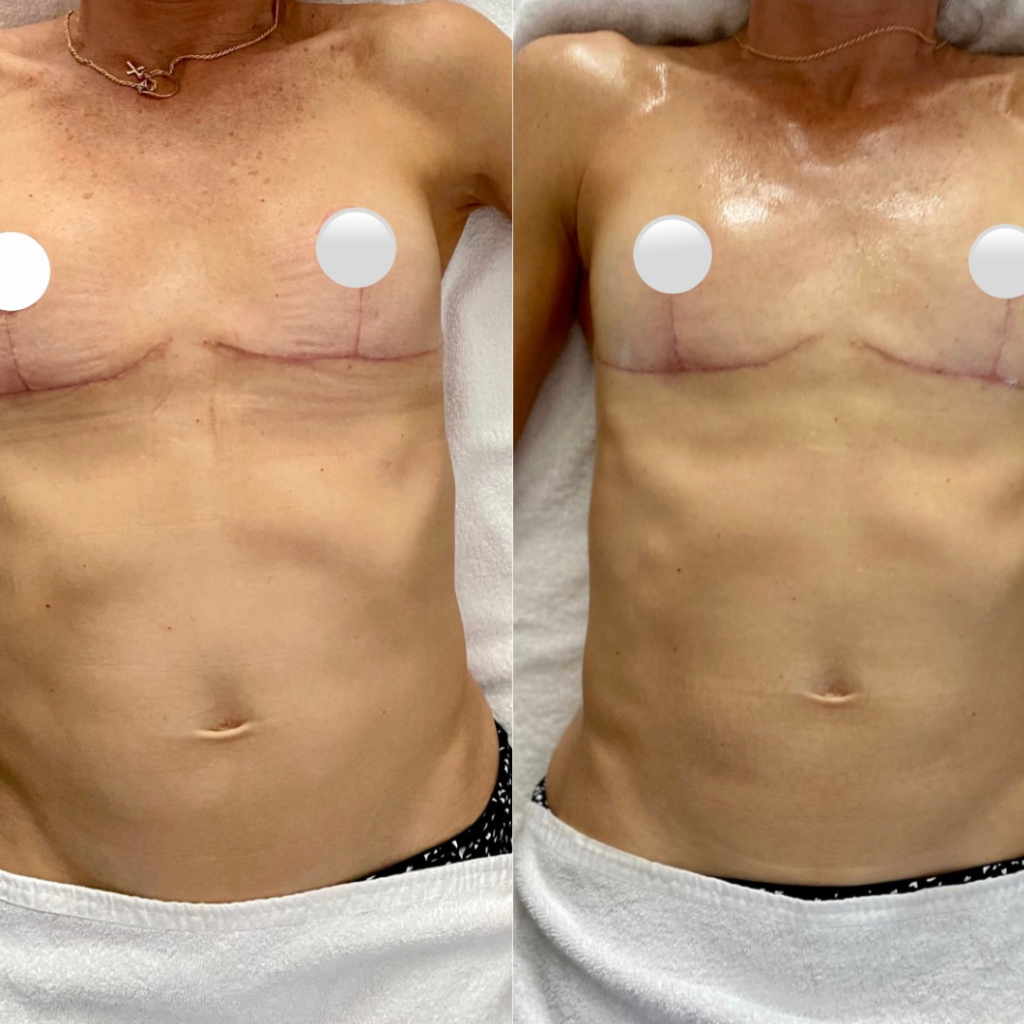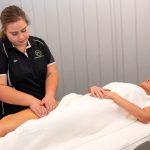Breast explant surgery, while often necessary for health reasons or personal choice, can lead to discomfort and challenges during the recovery process. However, incorporating the M1 Lymphatic Method into post-surgery care can significantly alleviate these issues and promote a smoother recovery journey.
Post-surgery, the body undergoes various changes and may experience side effects such as fluid retention, pain, swelling, and the risk of developing fibrosis. Fortunately, the gentle yet effective techniques of the M1 Lymphatic Method can address these concerns and support overall healing.
- Reduces Fluid Retention
One of the primary benefits of lymphatic drainage massage post-surgery is its ability to facilitate the removal of excess fluids, toxins, and medications from the body. While the body naturally eliminates waste, the healing process often prioritises other functions, leading to fluid retention. By incorporating lymphatic drainage massage, this process can be accelerated, providing relief from swelling and discomfort.
- Minimises Risk of Fibrosis
Additionally, lymphatic drainage massage has been shown to reduce the development of fibrosis, a common complication characterised by the thickening and scarring of connective tissue. Research has indicated that regular lymphatic drainage massage can help prevent the formation of lumps and hardened scar tissue, ultimately minimising pain and improving overall tissue health.

- Supports Immune System
Studies have also demonstrated the immune-boosting effects of lymphatic drainage massage. By stimulating the lymphatic system, massage enhances the immune system’s cytotoxic capacity, empowering the body to fend off illness, bacteria, and infection more effectively. This added defence can be particularly beneficial during the post-surgery recovery period, reducing the risk of complications and supporting overall wellbeing.
- Improves Healing
One study published in the Journal of Manual & Manipulative Therapy found that patients who received lymphatic drainage massage following surgery experienced faster recovery times and reduced post-operative pain compared to those who did not receive massage therapy. Another study published in the Journal of Plastic, Reconstructive & Aesthetic Surgery concluded that lymphatic drainage massage effectively reduced post-surgical swelling and improved tissue healing in patients undergoing breast surgery.
Book Your Appointment Today!
Incorporating the M1 Lymphatic Method into the post-operative care plan for breast explant surgery can significantly enhance recovery outcomes and promote overall wellbeing. By addressing common side effects such as fluid retention, pain, swelling, and the risk of fibrosis, lymphatic drainage massage supports the body’s natural healing processes and encourages a smoother, more comfortable recovery journey.
Get in touch to find out more or book online.
Resources:
- Földi M, Földi E, Strößenreuther RH. (2006). Foundations of Manual Lymph Drainage. 3rd ed. St. Louis: Elsevier.
- Koul R, Dufresne RG Jr, Levesque P, Cayci C. (2016). Manual lymphatic drainage for lymphedema following breast cancer treatment. Cochrane Database of Systematic Reviews, 3(3), CD003475.
- Cassuto D, Marangoni O. (2014). Surgery, lymphoedema, and microsurgery. European Journal of Lymphology, 25(70), 5-8.
- Vignes S, Blanchard M, Yannoutsos A, Arrault M. (2011). Complications of autologous lymph-node transplantation for limb lymphoedema. European Journal of Vascular and Endovascular Surgery, 41(4), 442-447.
- Boursier V, Voche P, Franck D, Guerre A, Lémée JM, Bekara F, Herlin C, Sinna R. (2018). Manual lymphatic drainage in addition to guidelines and exercise therapy after axillary lymph node dissection for breast cancer: a randomized controlled trial. Supportive Care in Cancer, 26(4), 1291-1298.





